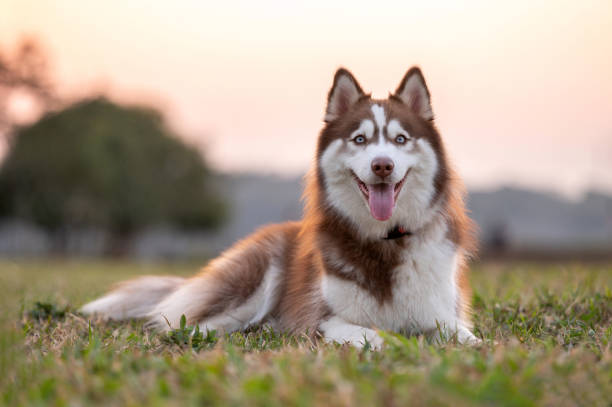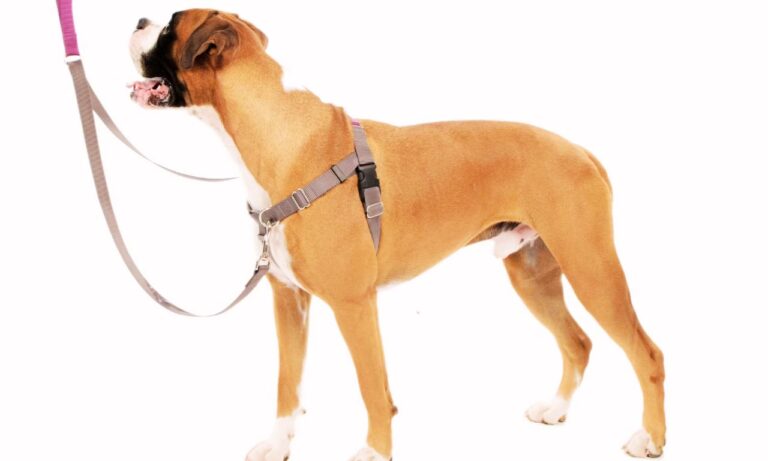Male Huskies are one of the most athletic and iconic breeds in the dog world. If you’re raising a male Siberian Husky puppy or already have a handsome adult Husky at home, understanding their proper weight range is essential to keeping them healthy and happy.
In this detailed guide, we’ll cover everything you need to know about male Husky weight kg — including month-by-month growth charts, real-life averages, factors that influence their size, and tips to manage their weight at every stage of life. Let’s dive in!
For guidance on choosing the right collar size for an Airedale puppy, check out this detailed guide.
Blog Highlights
ToggleWhat Is the Average Weight of a Male Husky in KG?
A fully grown male Siberian Husky typically weighs between 20 to 27 kilograms (kg).
To break it down even more:
- Most male Huskies fall right around 22–25 kg when at their healthy adult weight.
- Working-line Huskies may stay closer to 20–22 kg (leaner builds).
- Show-line Huskies sometimes reach 25–27 kg (bulkier builds).

These numbers translate to about 45–60 pounds (lbs), if you’re more familiar with imperial units.
Regardless of the final number, the goal is a strong, agile, well-muscled dog that’s neither overweight nor underweight. For insights on whether Airedales are good off-leash, explore this comprehensive article.
Male Husky Puppy Weight Chart (KG): Month-by-Month Growth
A Husky’s first year is full of rapid changes. Here’s a realistic male Husky puppy weight chart in kilograms to help you track your boy’s growth:
| Age | Weight (kg) |
| 8 weeks | 3.6–5.4 kg |
| 3 months | 8–10.5 kg |
| 4 months | 10–12.5 kg |
| 5 months | 11.5–14.5 kg |
| 6 months | 13.5–18 kg |
| 9 months | 16–22 kg |
| 12 months | 18–25 kg |
| 18 months | 20–27 kg |
By around 12 months, most male Huskies are close to their adult weight, but they may continue adding muscle and “filling out” until they’re around 18 months or even 2 years old.

If your Husky’s weight seems a little ahead or behind this curve — don’t panic! Individual variation is completely normal as long as your vet confirms your dog is healthy. Discover the benefits of using a harness by reading this guide on should a Collie wear a harness.
Factors That Influence Male Husky Weight KG
Several important factors can influence how heavy your male Husky grows:
1. Genetics
If your Husky’s parents were large, muscular dogs, it’s likely he’ll grow on the higher end of the weight range. Genetics control both height and body composition.
2. Lineage (Working vs Show Lines)
Working-line Huskies bred for sled racing tend to be leaner and lighter (closer to 20–22 kg). Show-line Huskies, bred for appearance, often grow bigger (24–27 kg).
3. Diet
Puppies fed high-quality, properly portioned meals grow more steadily and evenly. Overfeeding can cause excessive fat gain instead of healthy muscle development.
4. Activity Level
Huskies are natural athletes. A sedentary lifestyle may cause them to gain fat, while a highly active lifestyle supports a lean, muscular frame.
5. Health Issues
Conditions like parasites, thyroid problems, or orthopedic diseases can cause abnormal weight fluctuations.
Understanding these variables helps you guide your Husky toward his healthiest weight. Learn if Dachshunds need special collars to provide the right support and comfort for their unique body shape.

Healthy Male Husky Weight Range by Age (KG)
Here’s a deeper look at realistic male Husky weights as they grow:
- 8 weeks: 4–5 kg
- 3 months: 8–10 kg
- 6 months: 14–17 kg
- 9 months: 18–22 kg
- 12 months: 20–25 kg
- 18 months: 22–27 kg
These ranges allow for minor differences based on genetics, build, and nutrition. Generally, if your male Husky is tracking along these lines, he’s right on schedule.

Male vs Female Husky Weight KG Differences
Male Huskies consistently grow larger and heavier than females.
Here’s a simple side-by-side comparison:
| Measurement | Male Husky | Female Husky |
| Average Weight | 20–27 kg | 16–23 kg |
| Average Height | 53–60 cm | 50–56 cm |
Males are more muscular and broader through the chest and shoulders. Females tend to have a lighter, slightly more streamlined frame.
If your male Husky weighs significantly less than 20 kg or more than 27 kg as an adult, it’s a good idea to double-check with your vet to ensure his health is optimal.
How to Tell If Your Male Husky Is at a Healthy Weight
Beyond just the numbers, evaluating your Husky’s body condition is crucial. Here’s how to spot a healthy weight:
- You should be able to feel his ribs easily but not see them sticking out.
- His waist should be visible when viewed from above.
- From the side, he should have a gentle abdominal tuck behind the ribs.
- He should move easily, run, jump, and play without getting exhausted quickly.
If your Husky looks round or lacks a waistline, he might be carrying extra fat.
If his ribs, spine, or hip bones are clearly visible, he may be underweight.

What Can Cause a Male Husky to Be Underweight?
If your male Husky is falling significantly under the typical weight range, several causes could be at play:
1. High Activity Level
Huskies can burn off calories faster than they take them in if they’re highly active.
2. Poor Diet
Low-quality food with insufficient protein, fat, or calories won’t support optimal growth.
3. Parasites
Intestinal worms or other parasites steal nutrients, leading to slow weight gain.
4. Health Conditions
Illnesses such as thyroid disorders, diabetes, or malabsorption syndromes can affect weight.
If you suspect your Husky is underweight, your veterinarian can run tests and recommend tailored solutions. Discover what size collar is best for a French Bulldog puppy to ensure both safety and comfort during their growing stages.
What About Overweight Male Huskies?
While less common in young, active Huskies, overweight males can happen — especially in adulthood.
Signs of an overweight male Husky include:
- No visible waist or tuck
- Difficulty running or jumping
- Heavy breathing even after light exercise
- Fat deposits at the base of the tail, chest, or back
Overweight Huskies are at higher risk for:
- Hip dysplasia
- Arthritis
- Heart disease
- Reduced life expectancy
Weight management is critical to keeping your Husky happy and mobile.
How Much Should You Feed a Male Husky?
Feeding needs vary based on age, size, and activity level. On average:
- Puppy (2–6 months): 3–4 meals per day, approximately 1000–1400 kcal daily
- Juvenile (6–12 months): 2–3 meals per day, around 1200–1600 kcal daily
- Adult (12+ months): 2 meals per day, roughly 1000–1400 kcal depending on exercise
Focus on high-quality dog food rich in protein (24–30%) and fat (14–20%) to fuel their active metabolism. Avoid free-feeding (leaving food out all day) — portion control is key.
Always adjust food quantities based on your Husky’s weight, body condition, and energy expenditure.
Exercise Needs for Male Huskies
Male Huskies require a tremendous amount of physical activity to maintain a healthy weight:
- Daily Exercise: 1.5–2 hours minimum
- Activities: Brisk walks, runs, hikes, agility, sledding, pulling carts, or free running in a secure area
Without enough exercise, Huskies can quickly gain unhealthy weight — and develop behavioral issues like destructive chewing or escape attempts.
The more active your Husky, the easier it is to keep him within his ideal weight range naturally.
Male Husky Growth Milestones
Here’s a quick snapshot of what you can expect at each life stage:
- 2–4 Months: Explosive growth. Puppies double or triple birth weight.
- 4–6 Months: Gangly teenage phase. Rapid height increase.
- 6–9 Months: First signs of adult body proportions. Muscles begin to develop.
- 9–12 Months: Near-adult size but still lean.
- 12–18 Months: Muscular filling out. Chest broadens.
- 18–24 Months: Full adult maturity. Peak body condition.
Growth isn’t perfectly linear — it often happens in bursts. Don’t stress too much about day-to-day fluctuations; the long-term trend matters most.
Comparing Male Husky Weight KG to Other Breeds
Just for fun, here’s how male Huskies compare in weight to other popular male dog breeds:
| Breed | Average Male Weight (kg) |
| Siberian Husky | 20–27 kg |
| Labrador Retriever | 29–36 kg |
| German Shepherd | 30–40 kg |
| Golden Retriever | 29–34 kg |
| Border Collie | 14–20 kg |
| Alaskan Malamute | 36–43 kg |
You’ll notice that male Huskies are lighter than heavy breeds like German Shepherds or Malamutes — reflecting their unique history as sled dogs bred for speed and endurance, not brute strength.
Final Tips for Raising a Healthy Male Husky
Raising a strong, healthy Husky boy isn’t just about feeding him right. It’s a whole lifestyle! Here are a few final reminders:
- Track his weight monthly during the first year, then quarterly after adulthood.
- Use body condition scoring rather than obsessing over scale numbers alone.
- Feed for energy needs, not emotions. Avoid overfeeding.
- Stay active together! Daily physical and mental stimulation keeps your Husky fit and happy.
- Schedule regular vet checks to monitor his development, especially in the first two years.
Huskies are incredibly rewarding companions when their physical needs are met — and watching your male Husky grow into a powerful, athletic adult is one of the great joys of dog ownership.
Final Thoughts: Celebrating Every Kilogram Gained
Whether your Male Husky Weight KG ends up weighing 22 kg or 27 kg, what truly matters is that he feels strong, energetic, and confident in his body. Following a healthy growth plan ensures your boy will live a long, adventurous life by your side.
From the moment you pick up that tiny 4 kg fluffball to when you admire your stunning 25 kg adult sled dog, every kilogram gained is a beautiful sign of his journey — and your incredible care. Understand if French Bulldogs can wear dog collars and how it affects their neck structure and overall health.





